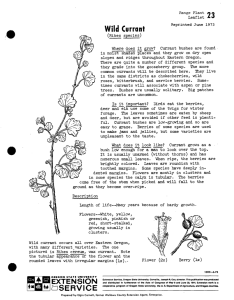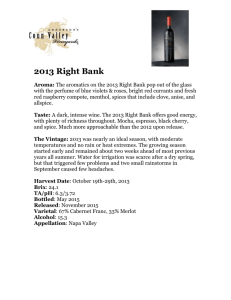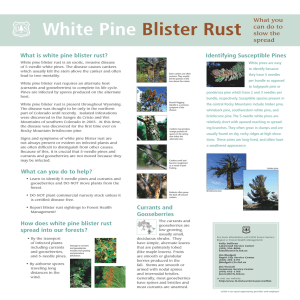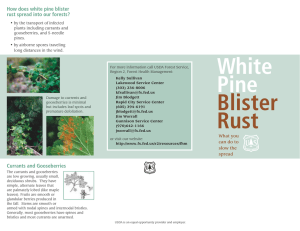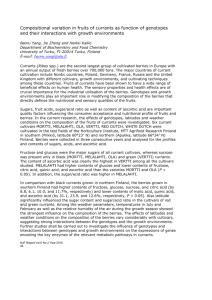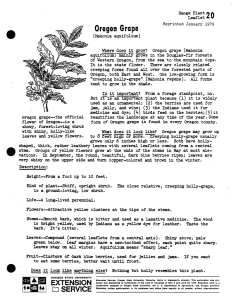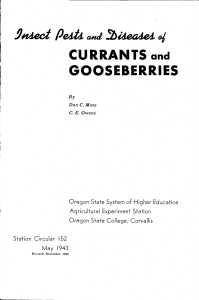Gooseberries
advertisement
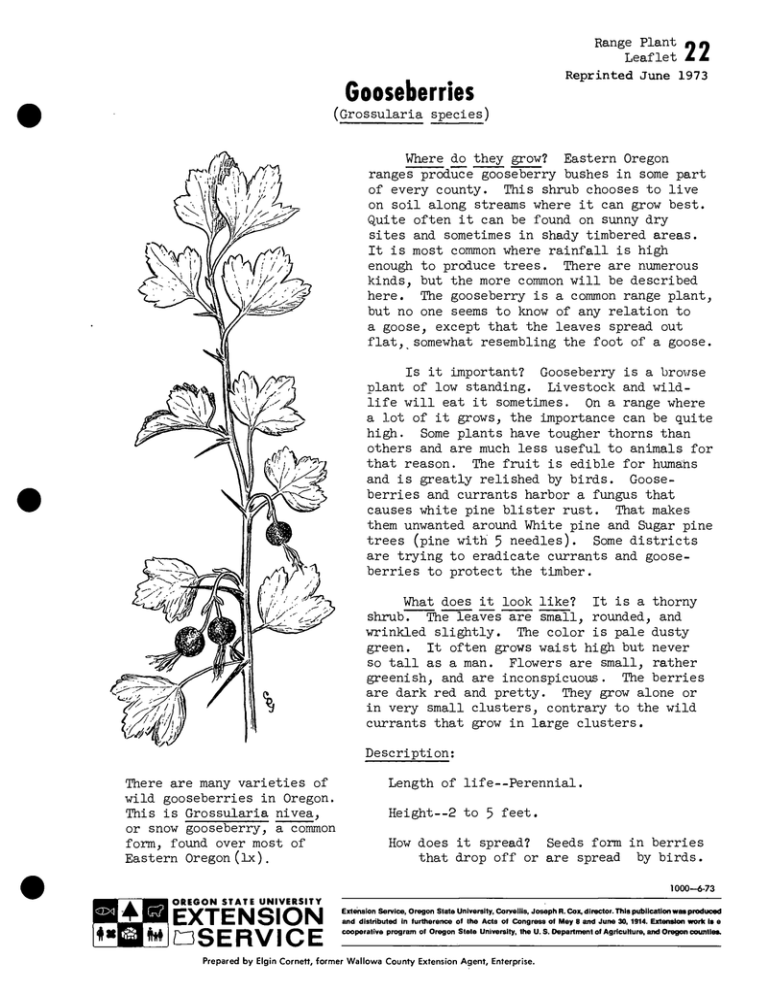
Range Plant nn Leaflet A A Reprinted June 1973 Gooseberries (Grossularia species) Where do they grow? Eastern Oregon ranges produce gooseberry bushes in some part of every county. This shrub chooses to live on soil along streams where it can grow best. Quite often it can be found on sunny dry sites and sometimes in shady timbered areas. It is most common where rainfall is high enough to produce trees. There are numerous kinds, but the more common will be described here. The gooseberry is a common range plant, but no one seems to know of any relation to a goose, except that the leaves spread out flat, somewhat resembling the foot of a goose. Is it important? Gooseberry is a browse plant of low standing. Livestock and wildlife will eat it sometimes. On a range where a lot of it grows, the importance can be quite high. Some plants have tougher thorns than others and are much less useful to animals for that reason. The fruit is edible for humans and is greatly relished by birds. Gooseberries and currants harbor a fungus that causes white pine blister rust. That makes them unwanted around White pine and Sugar pine trees (pine with 5 needles). Some districts are trying to eradicate currants and gooseberries to protect the timber. What does it look like? It is a thorny shrub-^ The leaves are small, rounded, and wrinkled slightly. The color is pale dusty green. It often grows waist high but never so tall as a man. Flowers are small, rather greenish, and are inconspicuous. The berries are dark red and pretty. They grow alone or in very small clusters, contrary to the wild currants that grow in large clusters. Description; There are many varieties of wild gooseberries in Oregon. This is Grossularia nivea, or snow gooseberry, a common form, found over most of Eastern Oregon (ix). Length of life--Perennial. Height--2 to 5 feet. How does it spread? Seeds form in berries that drop off or are spread by birds. 1000-6-73 OREGON STATE UNIVERSITY EXTENSION p_—i ^^ ^M ^^ % M | ^^V ^^ Extension Service, Oregon State University, Coryallis, Joseph R. Cox, director. This publication was produced and distributed in furtherance of the Acts of Congress of May 8 and June 30, 1914. Extension work Is a cooperative program of Oregon State University, the U. S. Department of Agriculture, and Oregon counties. Prepared by Elgin Cornett, former Wallowa County Extension Agent, Enterprise. Leaves—Rounded with 3 "to 5 mild points or lobes around the coarsely toothed edges. They are alternate, with leaf stalks about as long as the leaves. Flowers—Greenish or purplish, solitary or in small clusters. Fruit--Grows on the stem below the flowers and usually the dried bloom remains on the berries. Stems also stick to the other end when the berries are picked, making the berry sort of messy. It takes time to prepare the berries for cooking because of the dried flowers and short stems on each. This is in contrast with the smooth and easily prepared currants, but the birds don't seem to mind.. Does it look like anything else? There are many varieties of gooseberries. Currants are closely related and may be confused. Stems of gooseberries are usually spined and currants usually axe not. Gooseberry fruits do not break away from stems when picked, while currants always come free. But these differences aren't very important, forms of currants and gooseberries grading into each other. Some botanists say both are Ribes, that all belong to the same genus, and cannot be separated. So this description applies only to the common, thorny forms, usually called gooseberries.
